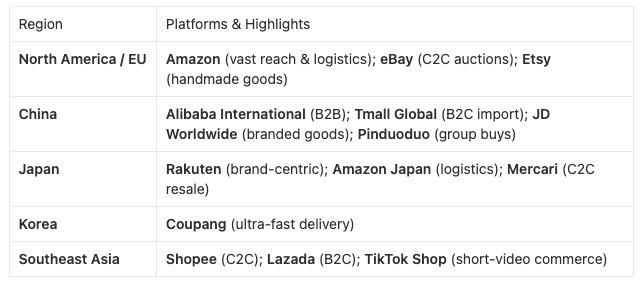Cross‑border e‑commerce—the art of selling to international buyers online—is booming in 2025. Thanks to tech advances and evolving shopping habits post-pandemic, brands worldwide are tapping new markets. This guide covers definitions, benefits, business models, key platforms, and what you need to launch successfully.
Cross‑border e-commerce, also known as international online retail, enables sellers to market goods and services to buyers in different countries via digital platforms (e.g., Taiwanese seller exporting to the US via Amazon).
Brands sell directly to consumers abroad.
Individuals sell second-hand or niche products internationally.
Wholesale transactions facilitated via e‑commerce platforms.

Prioritize unique, high-quality, in-demand items with manageable shipping and tariff costs
Study cultural preferences, local competition, legal requirements
Align with product type, budget, and audience segment
Partner with reliable carriers; consider FBA or local fulfillment; secure multi‑currency payment gateways (e.g. WorldFirst)
Deploy social ads, influencer campaigns, SEO, and email strategies tailored to each market